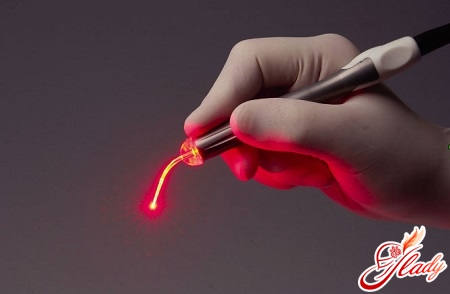
Today the diagnosis is "cervical erosion".occurs quite often, in almost every third woman. Erosion is called a defect on the surface layer of cells covering the cervix. There are two forms: true and false (pseudo-erosion).
Erosion: forms, signs and causes
The first form is an ulcer,arising on the walls of the cervix due to damaged epithelial cells as a result of mechanical action, for example, surgical abortion, traumatic insertion of a tampon, rough sexual intercourse. In the absence of infections and hormonal disorders, such erosion can heal on its own. But the second form, false erosion, is much more dangerous. It is a response to the formation of defects in the cervix. In their place, the mucous membrane begins to grow and a large inflamed area is formed. Such erosion should be treated to prevent its growth. After all, the damaged areas are a very favorable environment for various types of infections. The insidiousness of this disease is that it practically does not manifest itself, especially in the early stages. Sometimes there may be bloody discharge after intercourse or simply for no reason in the middle of the cycle. As a rule, women do not pay attention to this, and they learn about the existence of erosion only at a routine appointment with a gynecologist. However, the absence of symptoms does not mean that you should ignore this fact and postpone treatment. Many women who have not given birth do this because there is a belief that cauterization can lead to complications during childbirth. Let's figure out how true this is.
Burn or wait
It is believed that cauterization of erosion in women who have not given birthIt is prohibited for women. The reason for this prohibition is that after the cauterization procedure, a scar remains that prevents the cervix from opening during childbirth, as a result of which it begins to stretch poorly and tear. Therefore, all methods of treating erosion in nulliparous women should be excluded, the consequences of which may be:
- scar formation;
- severe soft tissue damage;
- spontaneous opening of the cervix, which during pregnancy threatens miscarriage.
Until recently, the most commonthe method of treating erosion was cauterization with electricity, which led to all the above-mentioned consequences. That is why it is not used for women who have not given birth. But this does not mean that they do not need to treat erosion at all, since postponing therapy can lead to dangerous complications. We are talking about malignant degeneration of cells in the damaged area. Cauterization in the traditional sense is, of course, undesirable for the cervix of a woman who has not given birth. However, today there are various methods of combating erosion that are suitable for everyone, including those who have not yet become mothers.
Gentle methods of treatment
Treatment of cervical erosion in nulliparous womenand girls is carried out only by gentle methods, after which scars and adhesions do not form. Today, there are several such methods. Which one to use is decided only by the doctor on an individual basis for each patient.
Each method is aimed at destructionaffected cells, however, unlike electrocoagulation, the above methods do not entail undesirable consequences for women who are yet to become pregnant and give birth. Often, a small erosion at the initial stage is only observed by a gynecologist before treatment is prescribed. It should be remembered that there are no universal methods for treating erosion, especially in women who have not given birth. Only a doctor can assess its nature and prescribe the most appropriate treatment with minimal consequences for the patient. In any case, you cannot ignore the condition of the cervix, let the disease take its course. Over time, it progresses and can lead to undesirable dangerous consequences. Therefore, you should regularly visit a gynecologist for a routine examination, even if nothing bothers you.









